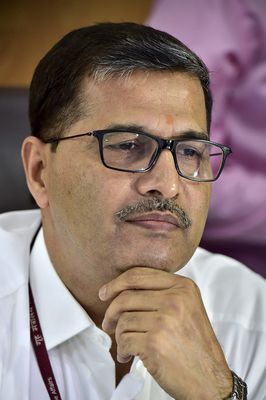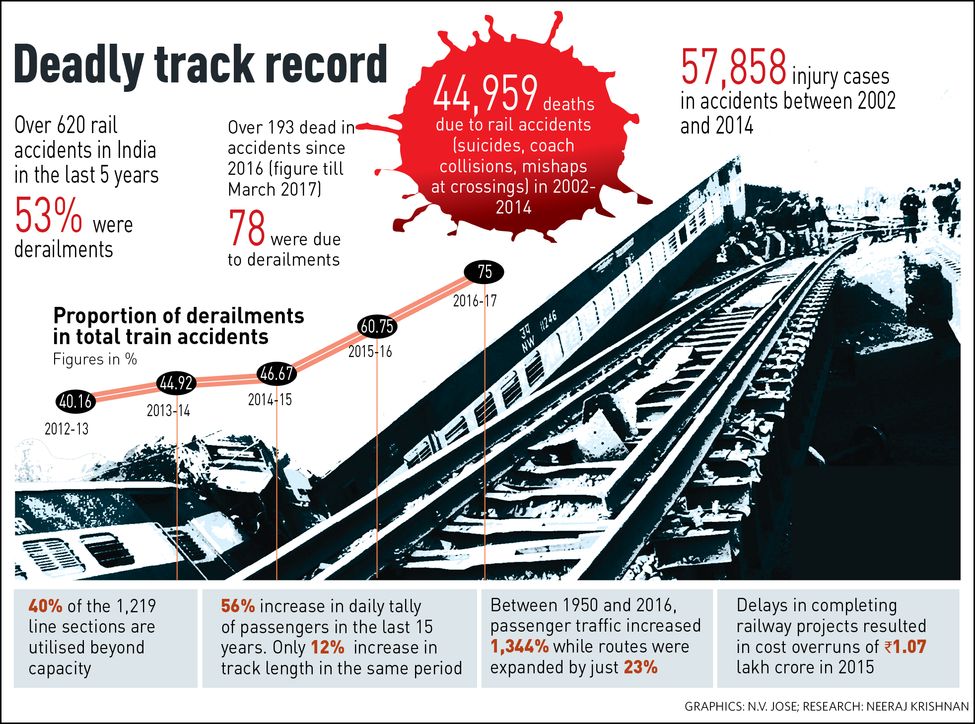On August 24, Ashwani Lohani arrived in Rail Bhavan in Delhi to take charge as chairman of the Railway Board. Before he entered the building, he paused for a moment and bowed down, as if acknowledging that he would need divine intervention to put matters right in the chief decision-making body of Indian Railways. For, unlike in the case of Air India, where he was chairman and managing director till the previous day, financials were just one of several problems plaguing the railways.
Soon after taking charge, he addressed nearly 3,000 officials at the Railway Bhavan auditorium, which is equipped to accommodate just a third of that figure. He told them that, together, they would end “VIP culture” and bring in “working culture”.
The system of allocating berths at short notice under ‘emergency quota’, perhaps, best symbolises what Lohani described as VIP culture. As many as 60,000 berths a day can be allocated this way, even though there is no guideline on what constitutes an emergency, nor a transparent system to allocate the berths. Mostly used by politicians and VIPs, emergency quota is a major source of corruption in the railways, as berths are often sold in the open market.
Lohani’s primary concern, however, will be different. “The first priority is safety,” he told journalists. “And then cleanliness of the stations.”
There have been five major derailments in the past one month, including two after Lohani took charge. The first accident under Lohani’s watch happened less than a week after he took charge. On August 29, the engine and nine coaches of the Nagpur-Mumbai Duronto Express derailed in Maharashtra.
Earlier that day, Lohani had sent a circular to all staff, asking them to bring about “all-round improvement” in their work. “Safety shall always remain our principal focus area,” he wrote. “We have to always be on our guard to ensure the highest level of safety in train operations and instil a renewed sense of confidence in our esteemed passengers.”
 During his stint at Air India, and earlier at India Tourism Development Corporation, Lohani (above) built his reputation as an employee-friendly boss | PTI
During his stint at Air India, and earlier at India Tourism Development Corporation, Lohani (above) built his reputation as an employee-friendly boss | PTI
Improving the railways’ safety record is a tough challenge, but the circular showed that Lohani has his heart in the right place. According to the ministry’s own data, 66 of 104 rail accidents in the 2016-17 fiscal alone happened because of “failure of railway staff”.
A NITI Aayog study released in August threw further light on the dismal state of affairs. Six of every ten train accidents in India since 2012, said the report, had happened because of negligence of railway staff. Negligence in spotting faults in tracks, repairing them, changing back tracks after maintenance, and manning crossings were cited. The report also found that derailments and mishaps at crossings accounted for as much as 90 per cent of total accidents, 85 per cent of casualties and 82 per cent of injuries.
In a written response to a query in Parliament in July, then railway minister Suresh Prabhu said, “Safety on the Indian Railways network is the product of the cohesive fusion of its myriad parts. Over 7,00,000 people work on safety-related operations.”
A small slip by any one of them can affect operations. Also, the safety directorate of the railways is facing a huge staff shortage. As many as 1.22 lakh of the sanctioned 7.46 lakh posts in the three departments under the directorate are vacant, said an official.
Take, for instance, gangmen, who are the eyes and ears of the railways. Gangmen patrol tracks to detect and repair defects, raise alerts and change track signals. “Rail safety starts with the gangman,” said an official. The railways, however, is short of 10,000 gangmen.
Apparently, a large number of vacancies are in security- and safety-related posts. While the Manual of Office Procedure, the organisational guide of the railways, assigns a safety-related responsibility to each personnel, there is no system to monitor compliance. “A safety culture is absent,” said an official of the safety directorate. “Not everyone thinks that safety should take priority over everything else. This needs to change.”
Despite the series of accidents, the Railway Board is yet to create the post of member (safety), as recommended by a parliamentary standing committee on safety and security of the railways. The committee had also sought a review of the current structure in the railways for addressing safety-related issues.
Currently, the Railway Board comprises chairman, finance commissioner, secretary, five directors-general, and members in charge of traffic, traction, rolling stock, engineering and staff. The railway ministry has decided against inducting a member in charge of safety, saying that safety is already an integral part of rail operations.
Piyush Goyal, who was appointed railway minister early this month, called a high-level meeting of safety officials on September 7. “There will be no compromise on the issue of safety,” he said after the meeting. “Be it shortage of funds, equipment or staff, everything will be addressed.”
(Interestingly, even as the meeting was in session, a minor derailment occurred near Shivaji station in Delhi, barely a few kilometres away.)
Goyal has highlighted five focus areas—eliminating all unmanned crossings in one year; giving priority to track replacement and diverting new tracks from sites that are accident-prone; stopping production of old-fashioned coaches designed by the Integral Coach Factory in Chennai and starting production of the internationally accredited Linke Hofmann Busch (LHB) coaches; expediting procurement of new tracks; and installing anti-fog LED lights on all locomotives.
Another major issue is keeping stations clean. In 2015, Indian Railways became one of the first government organisations to set up a separate department for in-house implementation of the Swachh Bharat Abhiyan. Yet, two years later, railway stations continue to remain dirty. Indian Railway Catering and Tourism Corporation Ltd recently did a survey to appraise 407 stations, and relegated as many as 302 to the lowest two levels of cleanliness. Passengers at all 407 stations said the level of cleanliness at toilets was a concern.
The dwindling operational ratio of the railways is another worry. Indian Railways now spends Rs 95 to earn every Rs 100 it does. That means it has very little surplus to spend on safety, infrastructure or cleanliness. Despite that, it has started development projects that need investments of more than Rs 1 lakh crore.
“Our operating ratio needs to be brought down considerably—not only by reducing expenditure, but also by increasing freight loading and finding other means for nonconventional revenue generation,” Lohani wrote in his August 29 circular.
He also needs to deal with the low morale of railway employees. Long hours, poor working conditions, the recent series of accidents and subsequent departmental inquiries have fostered mistrust among various departments and staff. “Everyone is under fear. There is a lot of mistrust, as everyone is passing on blame to others,” said an official, referring to a departmental inquiry Prabhu launched after a derailment in Muzaffarnagar in August killed 20 people and left hundreds injured.
Said Arunendra Kumar, former Railway Board chairman: “Motivation is lacking among lower-level employees. This is resulting in negligence and some lapses. There has to be better execution of existing safety standards.”
Lohani’s appointment could well turn things around. During his stint at Air India, and earlier at India Tourism Development Corporation, he built his reputation as an employee-friendly boss. In fact, he was so popular among Air India staff that this writer saw some of them crying at an impromptu farewell for Lohani at Airlines House, the Air India headquarters in Delhi.
If he comes to enjoy such goodwill in Rail Bhavan, too, Lohani could well turn around the railways’ fortunes.








